
As the cradle of Chinese culture, Zhengzhou is the birthplace of numerous cultural celebrities. These cultural celebrities carved out a niche for the city in history and evinced its spirits.
作为中华文化重要发祥地的郑州,曾涌现出许多文化名流。他们在文明发展的历史长河中为城市定位,用风骨魁奇来展现中原大地从古至今的文化流韵。
The BBC launched a documentary, Du Fu: China's Greatest Poet on the 7th of April, introducing Du's splendid life to the world.
4月7日,BBC推出了纪录片Du Fu: China’s Greatest Poet(《杜甫:中国最伟大的诗人》),向人们介绍杜甫波澜壮阔的一生。
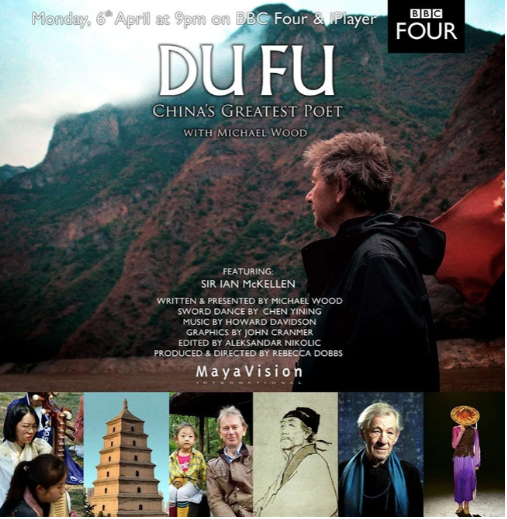
Du Fu: China's Greatest Poet(《杜甫:中国最伟大的诗人》
Du Fu was titled as "the greatest poet" in the documentary. It was the first time he was introduced to the world in the form of a documentary.
纪录片里杜甫被冠以“中国最伟大的诗人”,这也是第一次以纪录片的方式,被详细地介绍给全世界。
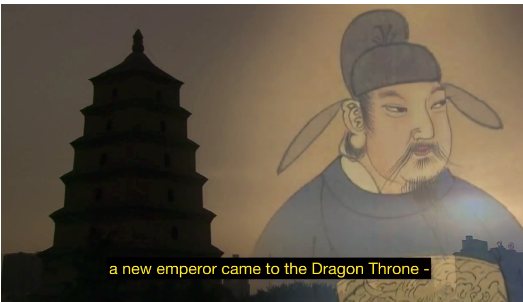
图片为BBC纪录片《杜甫:中国最伟大的诗人》截图
Historian Michael Wood, one of BBC's most popular presenters, directed this documentary, in which he not only traces the turbulent life of the "master of poetry," but also follows in his footsteps and retraces his path, from Zhengzhou (Gongyi), Xi'an, to Chengdu and Changsha, from the time he was born to the time he rose to the heights of working for China's emperor, from the Heyday of Kaiyuan to the war time.
这部纪录片由BBC最受欢迎的主持人之一、历史学家迈克尔·伍德(Michael Wood)执导,在片中他走访探寻了唐代诗人杜甫一生的足迹,从郑州(巩义)、西安,到成都、长沙,从出生到入仕,从开元盛世到战乱流离,回溯了诗人颠沛流离的一生。
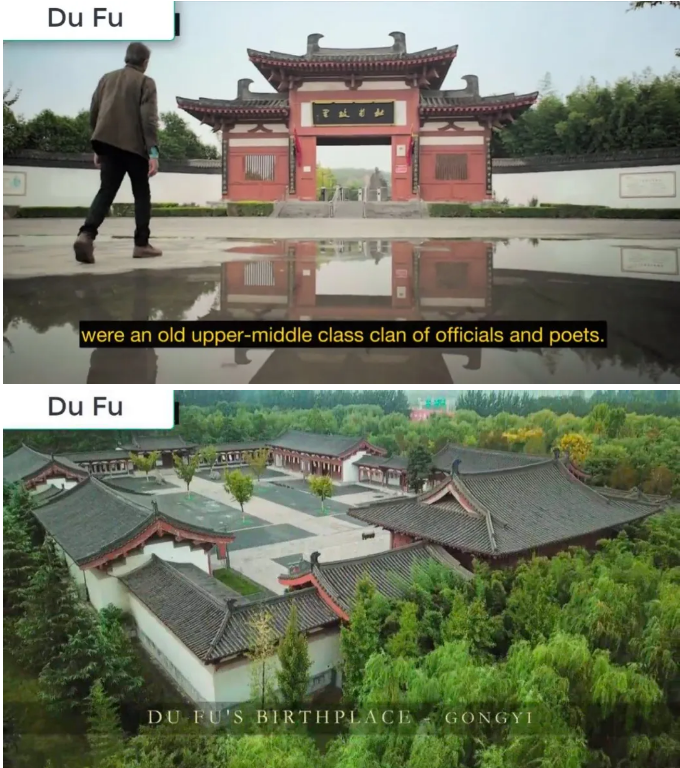
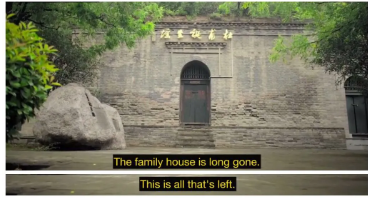
图片为BBC纪录片《杜甫:中国最伟大的诗人》截图
Du Fu was born and brought up in Nanyaowan Village, Zhanjie Town, which is 10 kilometers east of downtown Gongyi, Zhengzhou.
距离郑州巩义市区东10 公里的站街镇南瑶湾村,是杜甫出生并曾经生活的地方。
As you enter the Hometown of Du Fu Scenic Area, you will see a tall sculpture of Du Fu facing the gate. Most buildings in the scenic area are red-tone wooden structures decorated with Tang-style grey tiles, possessing old quaint charm. The scenic area mainly has three sections: poetry exhibit area, cave of birth and poet exhibit area, among which the cave is most noteworthy. Legend has it that Du Fu was born in the cave.
进入杜甫故里,正对着大门的,是一尊大大的杜甫塑像,景区内的建筑均以木质结构为主体,以红色为基调,再配以灰色顶瓦的唐代风格,整体样式古色古香,颇具韵味。景区按内容,主要分为三大板块——诗歌展示区、诞生窑以及诗人展区。其中,最值得一看的,就是诞生窑了,相传杜甫便是出生在这个小小的窑洞里。
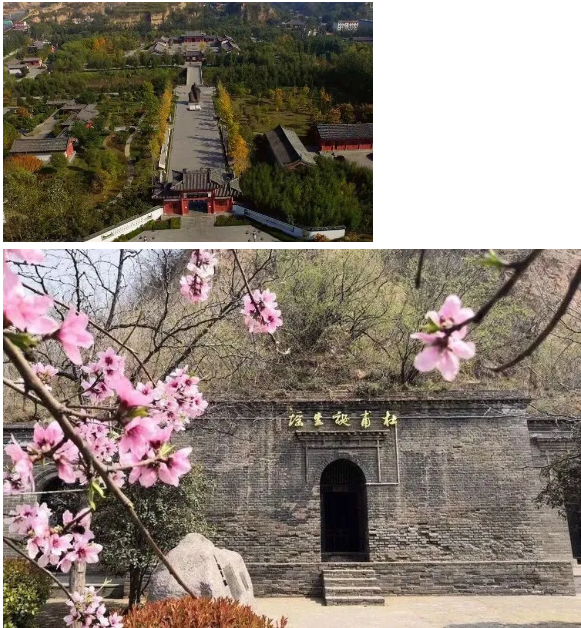
图片来源:杜甫故里景区
Bijia Mountain, named after its shape, is a hill rather than a lofty mountain. There is a small basin at the rear of the mountain which takes after an inkstone. According to folk tale, Du Fu used the basin as his inkwell.
窑洞所处的笔架山并非峻拔的山峰,而是一座不太高的黄土丘,因为看上去像笔架才得名的。山后有一个自然形成的小盆地,形状如同砚台,这就是民间传说杜甫磨墨作诗的“砚台池”。
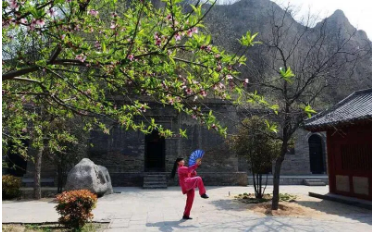
图片来源:杜甫故里景区
The cave was repaired in the Yuan Dynasty and Ming Dynasty. Now, a charcoal portrait of Du Fu hangs on the wall. Across from the cave is a grey tile-roofed three-room museum, which houses different editions of Du Fu collections, theses on Du Fu's poetry, genealogy and tracks. To the left of the cave is a stone stele carved with "Tang Du Gongbu Fu's Tablet" (gongbu: a post at the Ministry of Works) in regular script in the front.
窑洞曾在元、明之间进行过维修。现在,窑壁正中悬挂着杜甫的炭精画像,窑门正对面是三间青砖瓦房纪念室,陈列有历代多种杜诗版本和研究杜诗的论文,还有杜甫世系表和行迹图等。窑洞左侧有一通青石碑,正面楷书大字为“唐杜工部讳甫位”。
100 meters southwest of the yard is a quaint stele, engraved with "Former Home of Tang Du Gongbu" on the front. North of the stele lies a tablet carved with Record of Tang Du Gongbu Wenzhen Stele. It was built by Du Fu's 34th-generation and 35th-generation descendants in the 12th year of Emperor Tongzhi's reign in the Qing Dynasty (AD 1873).
院西南100 米处的村边路旁,竖立着一座古典雅致的碑楼,石碑正面楷书“唐杜工部故里”。碑楼北侧嵌青石刻一方,为《唐工部文贞公碑记》,是杜甫34 和35 代后裔在清同治十二年(1873 年) 合立的。
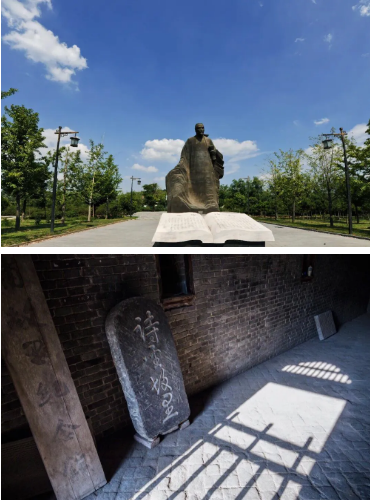
图片来源:杜甫故里景区
In 1962, it was established as "Du Fu Former Home Museum". In 2007, in order to promote traditional culture and revere Du Fu, the Gongyi Municipal People's Government restored Du Fu's Former Home in line with national AAAA scenic areas.
1962 年,这里正式被辟为“杜甫故里纪念馆”。2007 年,为了弘扬传统文化,同时缅怀圣贤,巩义市政府按照国家4A 级旅游景区重塑了杜甫故里。

